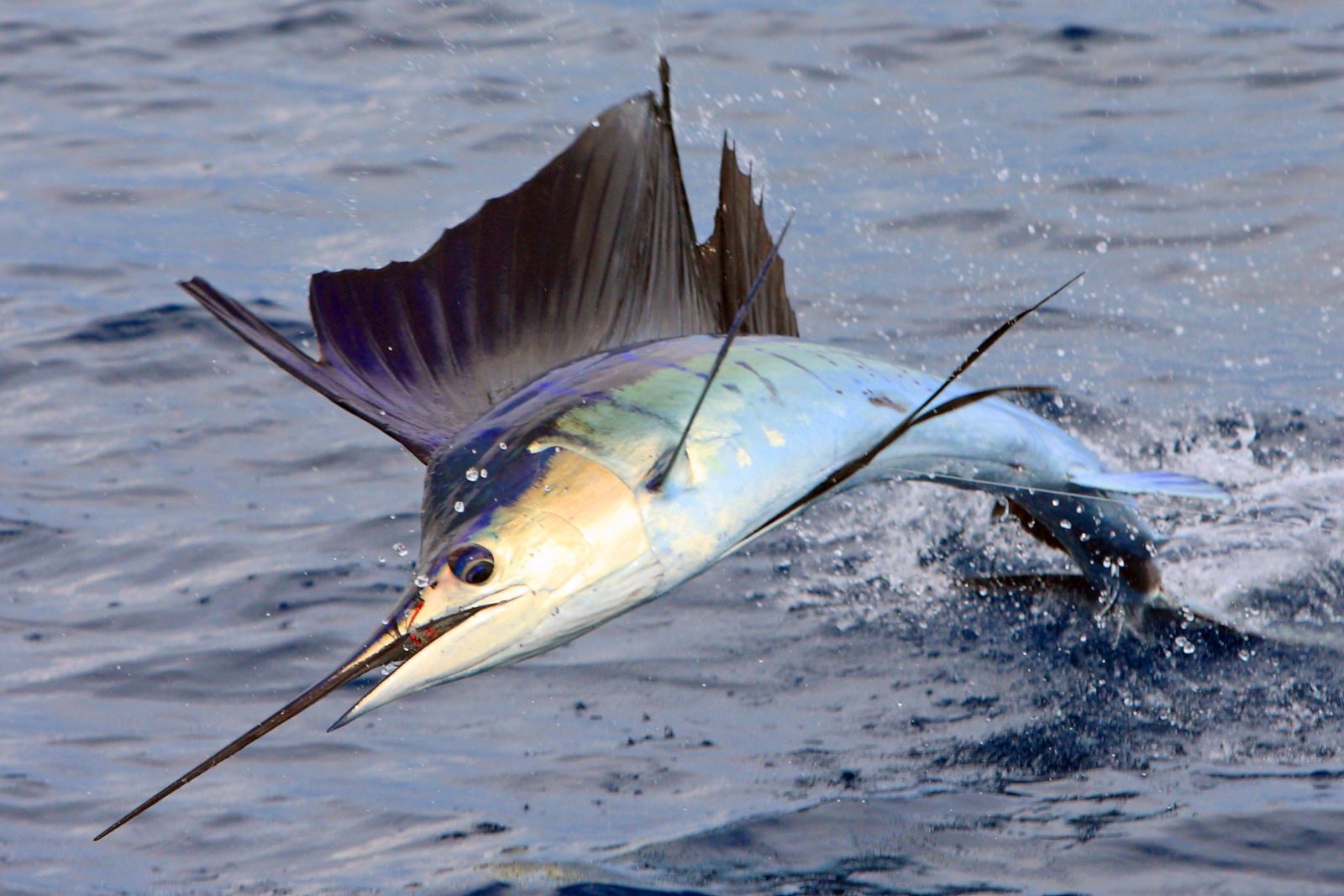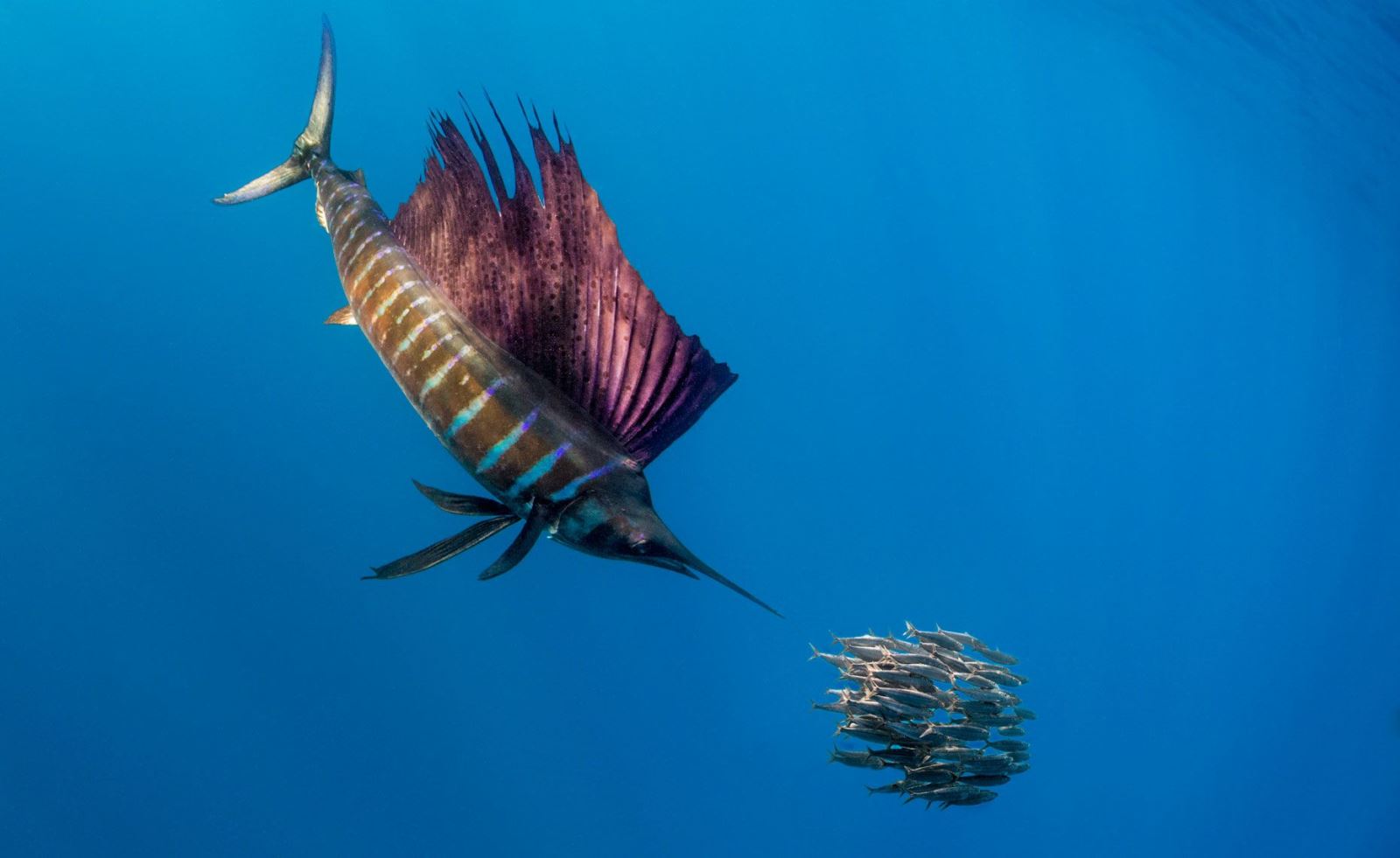Sailfish are a type of billfish (like the blue marlin or swordfish) that are known not only for their pointed bills, but also their extraordinary dorsal fins that can be taller than the length of their bodies. Sailfish start out as tiny larvae, no more than a few millimeters in length, but grow rapidly during their first year. They can grow from 0.125 inches (0.3 cm) when born to 10 feet (3 m) long from bill to tail and weigh upwards of 220 pounds (100 kg) in adulthood. Like other billfish, female sailfish can be larger than males so they can carry as many eggs as possible and have a greater chance of successful reproduction in the open ocean.

Sailfish eat a wide variety of prey throughout their lifetimes. At a young age, they eat tiny zooplankton, and their prey increases in size as they do. As adults, they eat fairly large bony fishes, crustaceans and squid. Sailfish also work together, using their dorsal fins to create a barrier around their prey, in order to feed on smaller schooling fish, such as sardines and anchovies.

Sailfish are eaten by a wide variety of predators. When newly hatched, sailfish are preyed on by other fishes that specialize on eating plankton. The size of their predators increases as they grow, and adult sailfish are not eaten by anything other than larger predatory fish like open ocean shark species, orcas and dolphinfish (also known as Mahi Mahi).

During spawning, a female will attract a male partner by extending her dorsal fin above the surface of the water. Male-female pairs form and reproduce through external fertilization, where the female releases her eggs into the water column while the male releases his sperm. While spawning, a single female may release several million eggs to increase the likelihood that some will be fertilized.

Sailfish are popular in recreational fishing (catch and release) but have little value in the commercial fishing industry and cannot be fished commercially in the Atlantic Ocean. Sport fisheries account for the sailfish’s highest catch rates, particularly in the Eastern Pacific Ocean where the species can be found near Central American coasts. Sailfish are also caught as bycatch by driftnets, harpoons and commercial, long-line tuna fisheries, where bycatch numbers are not accurately reported.
According to oceana.org











